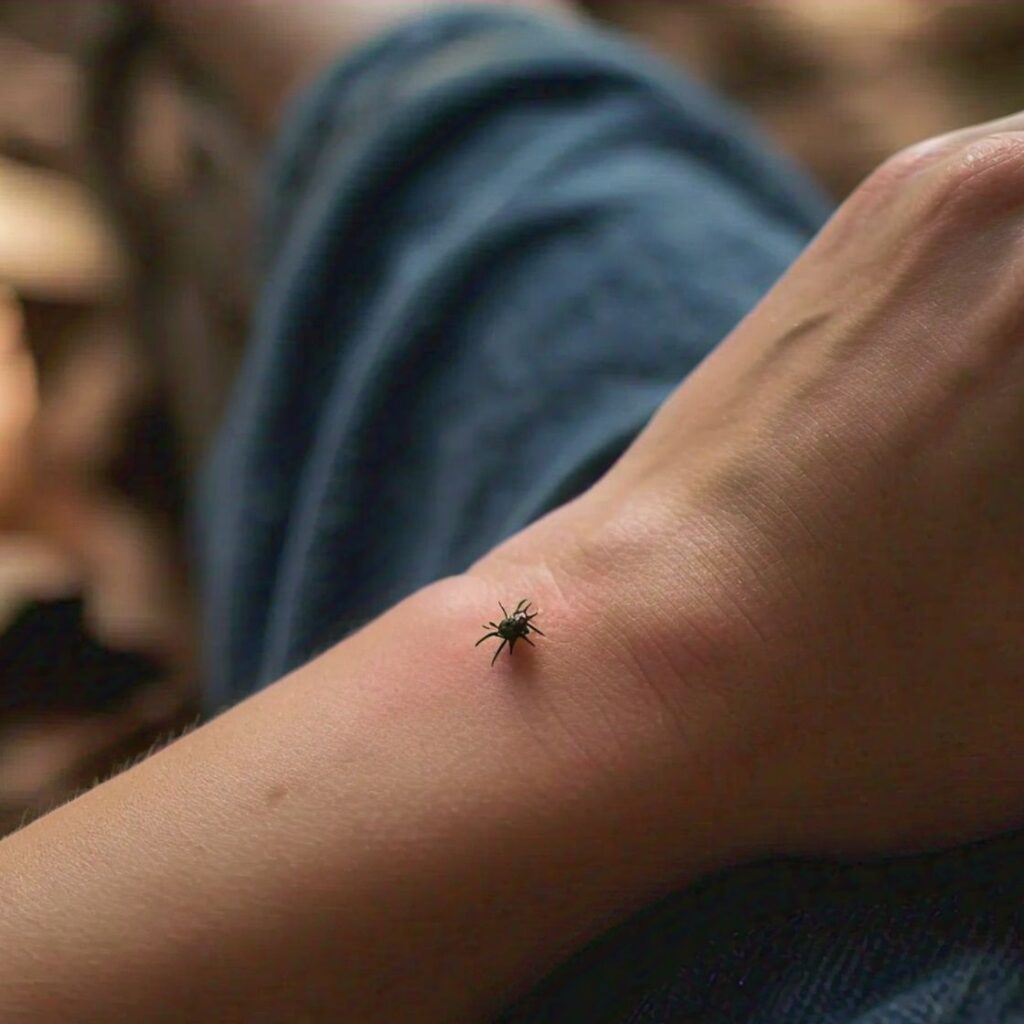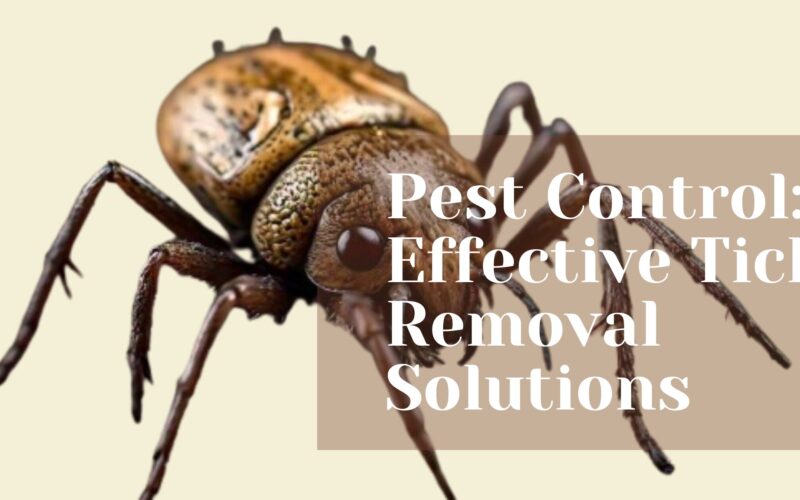Ticks are more than just a nuisance; they are vectors for a variety of serious diseases that can affect humans and animals. Effective tick removal solutions and pest control are crucial for maintaining a safe and healthy living environment.
This article delves into various strategies for tick removal and prevention, providing comprehensive guidance to ensure that your home, yard, and pets remain tick-free.
Understanding Ticks and Their Dangers
Ticks are small arachnids that feed on the blood of mammals, birds, and sometimes reptiles and amphibians. There are several species of ticks, but the most common ones that affect humans and pets include the black-legged tick (or deer tick), the American dog tick, and the lone star tick.
These parasites are capable of transmitting a variety of diseases, including Lyme disease, which can lead to serious health complications. In addition to Lyme disease, they can also carry and spread anaplasmosis, babesiosis, Rocky Mountain spotted fever, and ehrlichiosis, all of which are significant illnesses that affect both humans and animals.
The Life Cycle of a Tick
Understanding the life cycle of ticks is essential for implementing effective tick removal solutions. Ticks have four life stages: egg, larva, nymph, and adult. Each stage requires a blood meal to progress to the next.
The entire life cycle can take up to three years, depending on environmental conditions and the availability of hosts. Ticks are most active during warmer months but can be a year-round threat in certain regions.
Health Risks Associated with Ticks
Ticks pose significant health risks due to their ability to transmit pathogens. Lyme disease, the most well-known tick-borne illness, can cause severe health issues if not treated promptly.
The symptoms of Lyme disease typically include fever, a persistent headache, fatigue, and a distinctive skin rash known as erythema migrans, which often serves as a telltale sign of the infection.
It is important to note that if Lyme disease is left untreated, it has the potential to spread throughout the body, affecting various systems such as the joints, heart, and nervous system, leading to more severe health complications.
In addition to Lyme disease, there are other tick-borne illnesses that pose significant risks, such as Rocky Mountain spotted fever, which can be life-threatening if not addressed promptly with appropriate medical treatment. It is crucial for individuals who may have been exposed to ticks to be vigilant about any emerging symptoms and to seek medical advice as necessary.
Preventive Measures
Prevention is the first line of defense against tick infestations. Effective tick removal solutions begin with proactive measures to minimize the likelihood of encountering ticks in your environment.
Yard Maintenance
Keeping your yard well-maintained is crucial for reducing tick habitats. Here are some key practices:
- Mow the Lawn regularly. Ticks thrive in tall grass and brush. Keeping your lawn short reduces the areas where ticks can hide.
- Clear Brush and Leaf Litter: Remove piles of leaves, grass clippings, and brush, as these are ideal environments for ticks.
- Create a Barrier: Establish a 3-foot-wide barrier of wood chips or gravel between your lawn and wooded areas. This can help prevent ticks from migrating into your yard.
- Use Tick-Repellent Plants: Planting tick-repellent plants, such as lavender, rosemary, and marigolds, can help deter ticks from your yard.
- Keep Playground Equipment Away from Woods: Position swing sets, sandboxes, and other play structures away from wooded or brushy areas.
Personal Protection

Protecting yourself and your family from ticks when spending time outdoors is equally important:
- Wear Protective Clothing: Wear long sleeves, long pants, and tuck pants into socks to minimize skin exposure. Light-colored clothing can help you spot ticks more easily.
- Use Tick Repellents: Apply tick repellents containing DEET, picaridin, or oil of lemon eucalyptus to exposed skin and clothing.
- Conduct Regular Tick Checks: After spending time outdoors, thoroughly check yourself, your children, and your pets for ticks. Pay special attention to areas like the scalp, behind the ears, and under the arms.
- Shower After Outdoor Activities: Showering within two hours of being outdoors can help wash off unattached ticks and provides a good opportunity for a thorough tick check.
Protecting Pets
Pets are often the first to bring ticks into the home. Effective tick removal solutions for pets include:
- Use Veterinary-Approved Tick Preventatives: Topical treatments, tick collars, and oral medications can help protect your pets from ticks.
- Regularly Check Pets for Ticks: After your pet has been outdoors, especially in tick-prone areas, conduct a thorough tick check.
- Keep Pets Out of Tick Habitats: Try to prevent your pets from roaming in tall grass, brush, and wooded areas.
Effective Tick Removal Solutions
Despite preventive measures, ticks may still find their way onto you, your family, or your pets. Knowing how to remove ticks effectively and safely is crucial.
Manual Tick Removal
Removing ticks promptly can reduce the risk of disease transmission. Here’s how to do it correctly:
- Use Fine-Tipped Tweezers: Grasp the tick as close to the skin’s surface as possible.
- Pull Upward with Steady Pressure: Avoid twisting or jerking the tick, as this can cause the mouthparts to break off and remain in the skin.
- Clean the Bite Area: After removing the tick, clean the bite area and your hands with rubbing alcohol, an iodine scrub, or soap and water.
- Dispose of the Tick Properly: Place the tick in a sealed bag or container, wrap it in tape, or flush it down the toilet. Never crush a tick with your fingers.
- Monitor the Bite Area: Watch for signs of a rash or fever over the next few weeks. If you develop symptoms, seek medical attention promptly.
Natural Tick Removal Solutions
For those who prefer natural methods, there are several effective tick removal solutions:
- Essential Oils: Certain essential oils, such as tea tree oil, peppermint oil, and lavender oil, have natural tick-repellent properties. However, they should be used with caution, especially on pets, as some essential oils can be toxic to animals.
- Diatomaceous Earth: This natural powder can be applied to areas where ticks are likely to hide. It dehydrates and kills ticks upon contact.
- Neem Oil: Neem oil can be used as a natural pesticide for tick control. It is safe for use on pets and in the yard.
Chemical Tick Removal Solutions
Chemical treatments can provide effective tick removal solutions for more severe infestations:
- Tick Sprays and Foggers: These products can be used to treat outdoor areas and homes. Always follow the manufacturer’s instructions for safe use.
- Professional Pest Control Services: For large infestations, professional pest control services can provide comprehensive treatment plans tailored to your specific situation. They have access to more potent chemicals and specialized equipment that are not available to the general public.
- Tick Tubes: These tubes contain permethrin-treated cotton that mice and other small rodents use to build their nests. Since ticks often feed on these animals, tick tubes can help reduce tick populations by targeting them at their source.
Professional Consultation
When dealing with ticks, consulting pest control professionals can offer customized advice and effective solutions. Professional pest control services can:
- Assess Your Situation: Professionals can evaluate your property to determine the extent of the tick problem and identify potential sources.
- Develop a Tailored Treatment Plan: Based on the assessment, they can create a customized plan that includes a combination of chemical and natural treatments, as well as preventive measures.
- Provide Ongoing Support: Regular visits from pest control professionals can help maintain a tick-free environment through continuous monitoring and treatment.
- Educate Homeowners: Professionals can offer valuable insights and tips on maintaining a tick-free home and yard.
Conclusion
Effective tick removal solutions are essential for protecting your family, pets, and home from the dangers posed by ticks. By understanding the risks, implementing preventive measures, and knowing how to remove ticks safely, you can significantly reduce the likelihood of tick-borne diseases.
Combining natural, chemical, and professional solutions can provide a comprehensive approach to tick control, ensuring a safe and healthy living environment.
Whether you are dealing with a minor tick issue or a more severe infestation, taking proactive steps and consulting with professionals can help you achieve lasting results. Prioritize tick control as part of your overall pest management strategy to enjoy a tick-free home and peace of mind.
